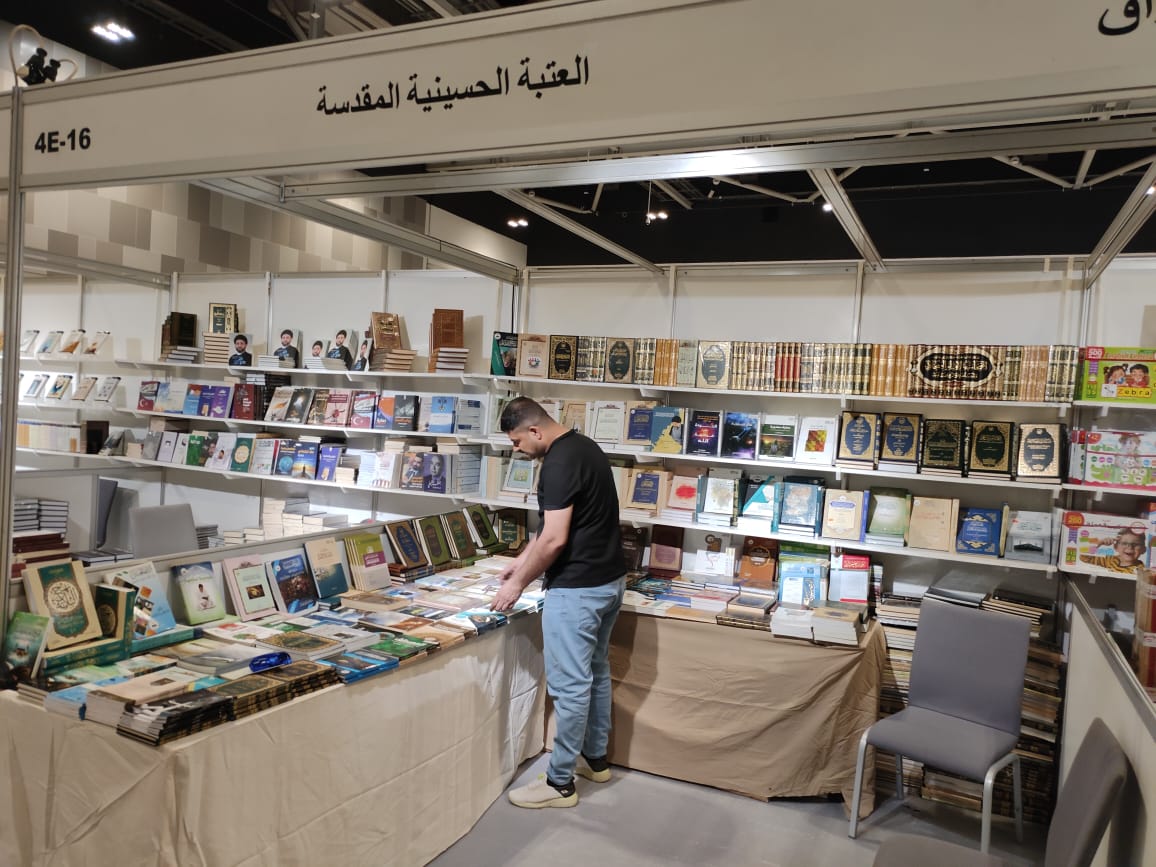Events from the Life of Imam Jafar Al-Sadiq (peace be upon him)
Name: Jafar
Title: al-Sadiq
Kunya: Abu Abdullah; Abu Musa
Father: Muhammad ibn Ali (Peace be upon him)
Mother: Umm al-Farwa
Born: 17th Rabi’ al-Awwal, 83 AH/702 CE in Madinah, Hejaz region of the Arabian Peninsula
Died: 25th Shawwal, 148 AH/765 CE, after being poisoned by the Abbasid Caliph al-Mansur
Age at Martyrdom: 63
Period of Imamate: 32 years
Buried: al-Baqi’ Cemetary, Madinah, Hejaz region of the Arabian Peninsula
The Truthful One
Imam al-Baqir, the fifth Imam, once said:
“…This is your Imam after me, so follow his example and benefit from his knowledge. By God, he is al-Sadiq (the Truthful One) – the one whom the Messenger of God (Prophet Muhammad) described to us (in prophecy). Indeed, his followers are aided (by God) in this world and in the Hereafter…”[i]
Imam al-Baqir was referring to the sixth immaculate Imam – Ja’far al-Sadiq. Under this Imam’s guidance, the Shia school became widely-known. Imam Ja’far al-Sadiq also taught the teachers of various schools of thought which developed in later generations.
Imam Ja’far al-Sadiq lived in the transition period between the corrupt ‘Umayyad and the tyrannical Abbasid governments. The unique political circumstances at that time helped limit the extent of persecution which the Imam and his followers were subjected to. Thus, Imam al-Sadiq instructed the Shia to take advantage of the situation by increasing their educational and academic activities throughout the Muslim world.[ii]
It was in recognition of this infallible Imam that the term Ja’fari refers to the Shia school of thought. Imam Ja’far al-Sadiq used to tell his companions, “When the man among you is conscious in regard to his faith, is honest in his words, delivers the trusts (to their rightful owners), perfects his manners with people, it will be said, ‘He is Ja’fari (a follower of Ja’far),’ and that would bring joy to me. But if (the man among you) is (in a condition) other than this, his ordeal and disgrace would (falsely) become attributed to me, when it is said that, ‘these are the manners of Ja’far…’”[iii]
The Sixth Imam
During the sixth Imam’s time, various ideologies emerged. While some of these schools remained within the folds of Islam, others were blatantly at odds with core principles of the Islamic faith. But each school had the freedom to make its case and defend its ideas.
The Islamic university that had been developing during the fifth Imam’s days was now coming to complete fruition with Imam al-Sadiq’s guidance. This great school quickly became the hub of academic discourse for over four thousand students whose thirst for knowledge was quenched by none other than Imam Ja’far al-Sadiq. The sixth Imam’s lessons ranged from the sciences of Qur’an and Prophetic tradition to chemistry, as witnessed by his student and renowned chemist Jabir ibn Hayyan. [iv], [v]
The famous Abu Hanifah, head of the Hanafi School in jurisprudence, used to say,
“I have not seen (anyone) more knowledgeable than Ja’far, son of Muhammad.”[vi]
As another example, Malik, head of the Maliki School in jurisprudence once said:
“I used to frequent Ja’far, son of Muhammad, for a while – indeed, I did not see him except in one of (these) three conditions: either praying, fasting, or reciting Qur’an. I never saw him narrating on behalf of God’s Messenger (Prophet Muhammad) except in a state of (ritual) purity. He did not speak of that which did not concern him…No eye had seen, nor ear had heard, and no heart of mankind had thought of (someone) more virtuous than Ja’far, son of Muhammad, in knowledge, worship, and piety.”[vii]
Proof of the Creator
At one point, a man asked Imam al-Sadiq, “What is the proof that you have a Creator?” Imam Ja’far al-Sadiq responded with the following:
“I found myself subject to one of two options: either I created myself or something other than myself created me. If I created myself, I am also subject to one of two options: either I created my self while my self already existed – but then I would not need to create it since it already existed – or I created my self while I was nonexistent, but you already know that the nonexistent cannot bring about anything. Therefore, the third meaning is proven – that I have a Creator, Who is Lord of the Worlds.”[viii]
This argument leaves no other possible option if one assumes that being created is a given. Another man challenged that thought, however, and told the Imam, “I am not a created (being).”
Imam al-Sadiq said, “Then describe for me – if you were a created (being) – how would you be (what qualities describe a created being)?” The man thought for a while, and then paid attention to a piece of wood that was near him. “Long, wide, deep, short, moving, stationary…all of these are qualities of being created.”
Imam al-Sadiq then said:
“If you do not know (how to differentiate) qualities of the created (being) as opposed to the not (created being), then consider yourself created due to these things which you see coming about in your own self.”[ix]
In other words, the descriptions of length after being short, of changing width and depth, of motion after stillness, all point to different states of being. Humans are subject to these changes all the time. The next state exists only after the previous one. Since change is taking place at every moment, all changing things are essentially being created continuously. Every instant, there is a new proof of us being created. iv
With the Corrupt Ruler
Imam Ja’far al-Sadiq had a number of bold confrontations with the corrupt rulers of his day. The Imam stood up and spoke the words of truth without fear or hesitation. One day, the Abbasid ruler Mansur was in the presence of Imam al-Sadiq. Mansur had been shooing away a fly which kept bothering him. As the corrupt ruler became annoyed he asked the Imam, “…Why did God create the fly?” Imam al-Sadiq replied, “To humiliate the arrogant ones.”
Mansur remained silent because he knew that, had he spoken, Imam al-Sadiq would have responded with an even more critical statement. But this same ruler chose to write to Imam al-Sadiq one day asking, “Why don’t you approach us as the people approach us?” The Holy Imam answered:
“There is nothing for which we fear you, nor do you have anything of the Hereafter that we would seek you for. Neither are you in a blessing such that we should congratulate you, nor do you see it as a burden such that we should send you our condolences. So what would we do at your place?”
Mansur wrote back, “You would accompany us to advise us.” Imam al-Sadiq’s response was decisive, “The one who wants this world would not advise you, and the one who wants the hereafter would not accompany you.”[x]
Mansur soon sought to relieve his worrisome thoughts about Imam al-Sadiq once and for all. The tyrant had the immaculate Imam poisoned in Madinah. On his deathbed, Imam al-Sadiq reminded his followers of an essential duty. The sixth Imam opened his eyes and looked into the faces of those around him saying,
“Indeed, our intercession does not extend to one who takes the prayers lightly.” With these words, Imam al-Sadiq emphasized the significance of prayer and its relation to the intercession of Divine Mercy. The sixth holy Imam was buried in the Baqi’ cemetery of Madinah.[xi]
[i] Pg. 15, Vol. 47 of Bihar al-Anwar by ‘Allamah Majlisi
[ii] Pg. 311 of Sirat al-A’immah by Sh. Ja’far Subhani
[iii] Pg. 187, Vol. 1 of Imam Ja’far al-Sadiq by Sh. Muthaffar
[iv] Pg. 313 of Sirat al-A’immah by Sh. Ja’far Subhani
[v] Pg. 180, Vol. 1 of Imam Ja’far al-Sadiq by Sh. Muthaffar
[vi] Pg. 308 of Sirat al-A’immah by Sh. Ja’far Subhani
[vii] Pg. 309 of Sirat al-A’immah by Sh. Ja’far Subhani
[viii] Pg. 169, Vol. 1 of Imam Ja’far al-Sadiq by Sh. Muthaffar
[ix] Pg. 170, Vol. 1 of Imam Ja’far al-Sadiq by Sh. Muthaffar
[x] Pg. 115, Vol. 1 of Imam Ja’far al-Sadiq by Sh. Muthaffar
[xi] Pg. 102, Vol. 1 of Imam Ja’far al-Sadiq by Sh. Muthaffar
Source: imam-us.org




